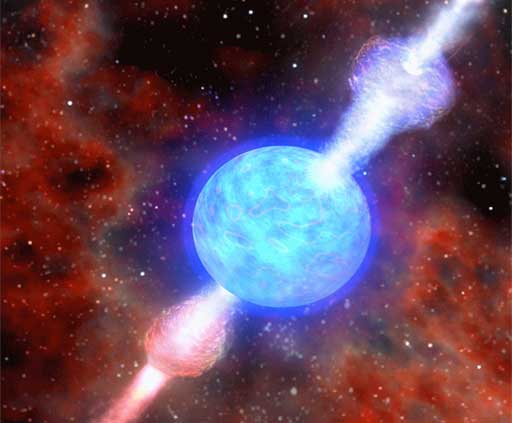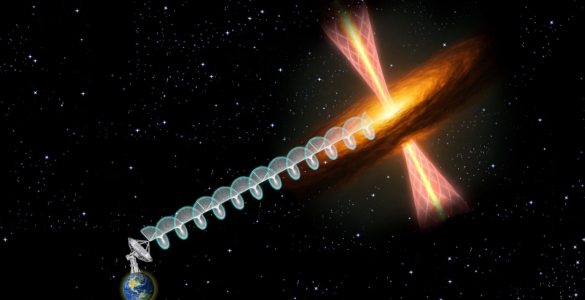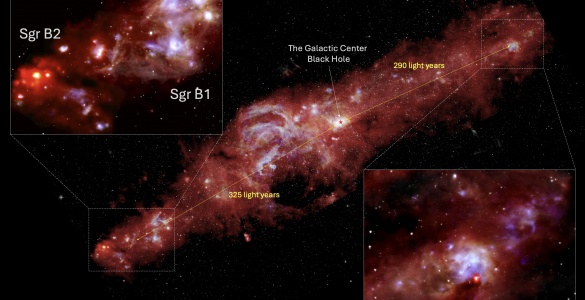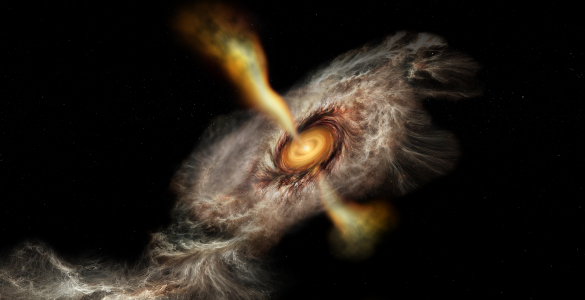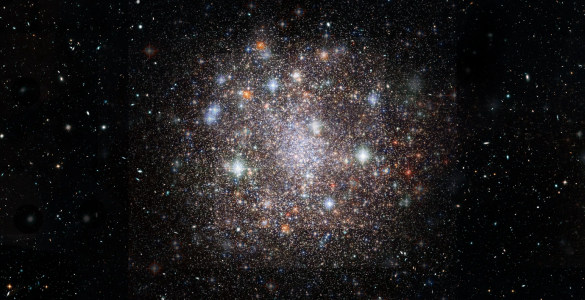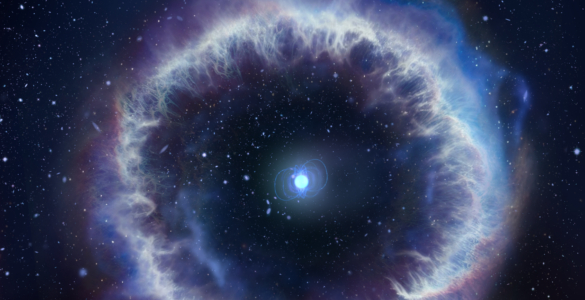A Fourth of July fireworks display features bright explosions that light the sky with different colors, yet all have the same cause. They just put their explosive energy into different colors of light. Similarly, astronomers have discovered, a variety of bright cosmic explosions all have the same origin and the same amount of total energy.
This is the conclusion of an international team of astronomers that used the National Science Foundation’s Very Large Array (VLA) radio telescope to study the closest known gamma-ray burst earlier this year.
“For some reason we don’t yet understand, these explosions put greatly varying percentages of their explosive energy into the gamma-ray portion of their output,” said Dale Frail, of the National Radio Astronomy Observatory (NRAO) in Socorro, NM. That means, he said, that both strong and weak gamma-ray bursts, along with X-ray flashes, which emit almost no gamma rays, are just different forms of the same cosmic beast. The research team reported their results in the November 13 issue of the scientific journal Nature.
The scientists trained the VLA on a gamma-ray burst discovered using NASA’s HETE-2 satellite last March 29. This burst, dubbed GRB 030329, was the closest such burst yet seen, about 2.6 billion light-years from Earth. Because of this relative proximity, the burst was bright, with visible light from its explosion reaching a level that could be seen in amateur telescopes. As the burst faded, astronomers noted an underlying distinctive signature of a supernova explosion, confirming that the event was associated with the death of a massive star.
Since 1999, astronomers have known that the strong outbursts of gamma rays, X-rays, visible light and radio waves from these bursts form beams, like those from a flashlight, rather than spreading in all directions, like light from a bare bulb. The surprising result from the VLA studies of GRB 030329 is that there are two beams, not one. The scientists found that the gamma rays and the early visible-light and X-ray emission were coming from a narrow beam, while the radio waves and later visible-light emission came from another, wider beam.
“The strange thing is that some explosions seem to put most of their energy into the narrow beam, while others put most or nearly all their energy into the wider beam,” Frail said. “This is telling us something very fundamental about the inner workings that drive these explosions,” Frail added.
The mechanism producing these explosions is what scientists call a collapsar, which occurs when a giant star collapses of its own weight at the end of its normal, nuclear fusion-powered lifetime. In an ordinary supernova, such a collapse produces a neutron star. A collapsar, however, marks the death of a more-massive star and results in a black hole, a concentration of mass so dense that not even light can escape it.
After the black hole forms, its powerful gravitational pull sucks the star’s remaining material toward it. This material forms a spinning disk around the black hole that lasts only a few seconds. During that time, the disk ejects material outward from its poles. A jet of material moving at nearly the speed of light emits gamma rays; slower material emits radio waves and visible light.
“Despite the differences in how much energy comes out in gamma rays, all these things seem to be caused by the same basic mechanism,” said Edo Berger, a graduate student at Caltech and lead author of the Nature paper. “Our observations now give the data that will help us understand what causes the differences,” he added.
“It was astounding to suddenly realize that these apparently very different cosmic beasts all are really the same thing,” said Berger.
The next job, Frail said, is to learn if there are, in fact, two jets, or a single jet in which the central part encounters less resistance and thus can move outward at greater speeds.
Frail pointed out that the radio observations alone had the ability to show the total energy output of the burst, thus providing the breakthrough in understanding the common thread among the different types of explosions. “The key fact is that the optical, X-Ray and gamma-ray telescopes missed 90 percent of the energy put out by this burst,” Frail added.
“As the VLA Expansion Project progresses and the sensitivity of the VLA improves in the coming years, it will become an even more important tool in unravelling this mystery,” Frail said.
“The exciting part of this new discovery is that explosions that we once thought were quite different now appear to all have a common origin,” Frail concluded. “That insight, of course, gives us the new challenge of explaining how a single mechanism can make itself look so different,” he added.
In addition to Berger and Frail, the other authors of the paper are Professor Shri Kulkarni of Caltech; Guy Pooley of Cambridge University’s Mullard Radio Astronomy Observatory; Vince McIntyre and Robin Wark, both of the Australia Telescope National Facility; Re’em Sari, associate professor of astrophysics and planetary science at Caltech; Derek Fox, a postdoctoral scholar in astronomy at Caltech; Alicia Soderberg, a graduate student in astrophysics at Caltech; Sarah Yost, a graduate student in physics at Caltech; and Paul Price, a postdoctoral scholar at the University of Hawaii’s Institute for Astronomy. Berger and Soderberg earlier worked on gamma-ray-burst studies as summer students at NRAO.
The National Radio Astronomy Observatory is a facility of the National Science Foundation, operated under cooperative agreement by Associated Universities, Inc.
Contact:
Dave Finley, Public Information Officer
Socorro, NM
(505) 835-7302
dfinley@nrao.edu






